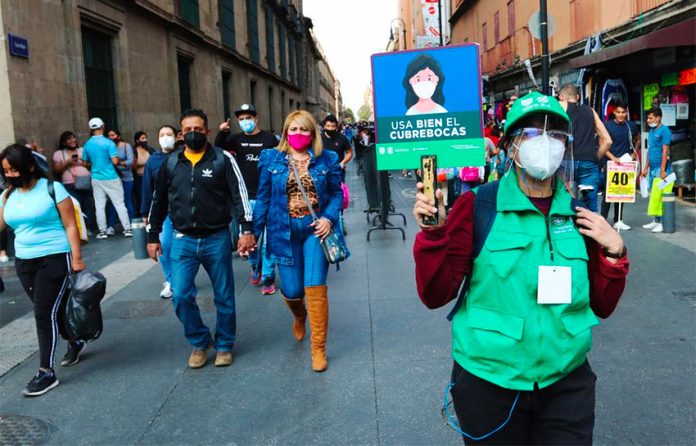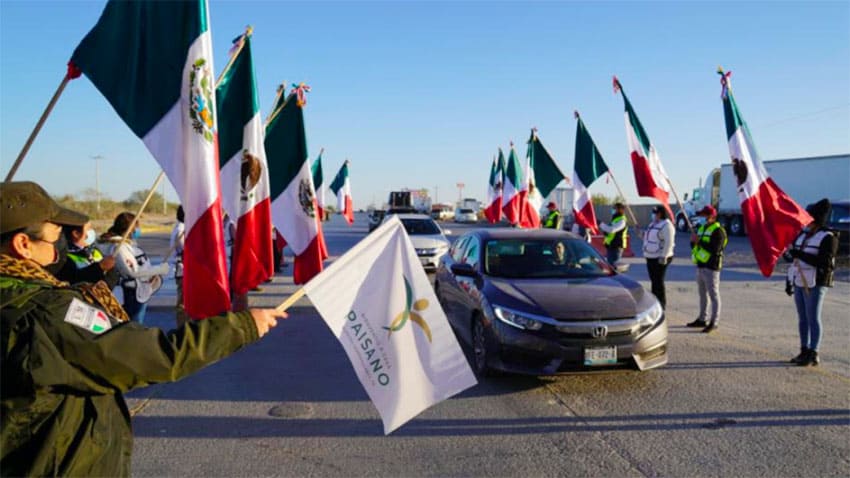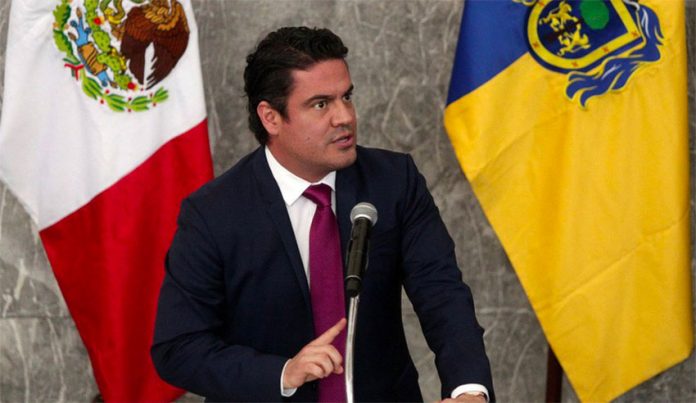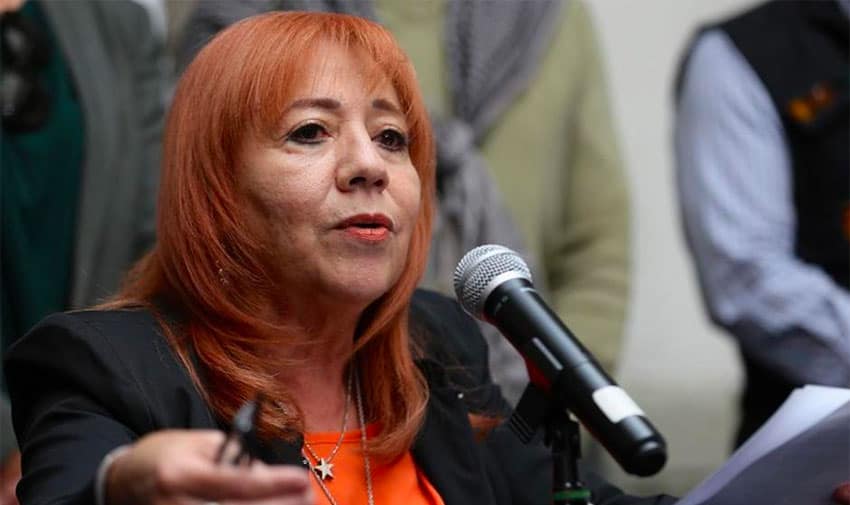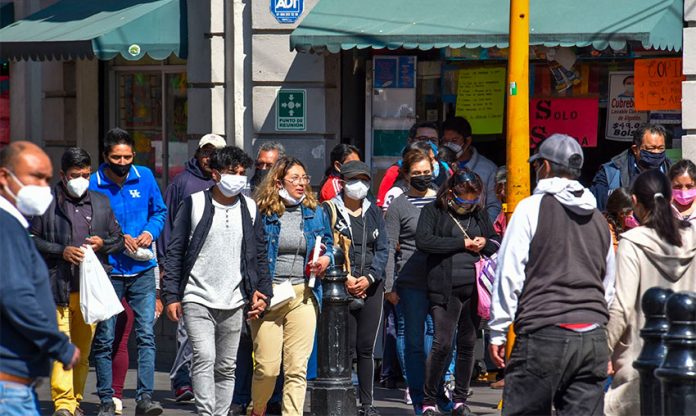Mexico City and México state will regress to maximum “risk” red on the federal government’s coronavirus stoplight, federal and state authorities announced Friday.
At a joint press conference with Mexico City Mayor Claudia Sheinbaum and México state Governor Alfredo del Mazo, Deputy Health Minister Hugo López-Gatell said that all nonessential activities must be suspended in the Valley of México metropolitan area from Saturday until January 10 due to a recent increase in coronavirus cases.
“We’ll have a temporary suspension of certain economic activities; it’s clear that all economic activity cannot be suspended, essential activities have to be maintained,” he said.
Supermarkets and pharmacies are among the essential businesses permitted to remain open. Restaurants will be restricted to delivery service.
Other essential sectors include transportation, manufacturing, construction, telecommunications and health. Essential government services related to security, water and infrastructure are also not affected by the red light restrictions.
“All [essential sectors] must follow the safety protocols,” López-Gatell said.
In turn, Sheinbaum said that “from tomorrow we’ll have to reduce mobility to avoid infections.” She added that the government is looking at ways it can support citizens financially.
The mayor said the health system in the capital is currently at 75% capacity. “Even increasing hospital capacity, we need to reduce the infection curve,” Sheinbaum said.
She called on residents not to hold or attend parties or other gatherings and urged them to wear a face mask and keep a healthy distance from each other.
“We know that it’s very complicated and the truth is we didn’t want to be living this situation,” Sheinbaum said. “… We’ll overcome it … [by making an] extraordinary effort. We thank everyone very much and ask citizens [for their] support and solidarity.”
The epicenter of the country’s coronavirus outbreak since the start of the pandemic, Mexico City currently has more than 34,000 active cases, according to Health Ministry estimates. There are more than 4,800 Covid-19 patients in hospitals in the capital including more than 1,100 on ventilators.
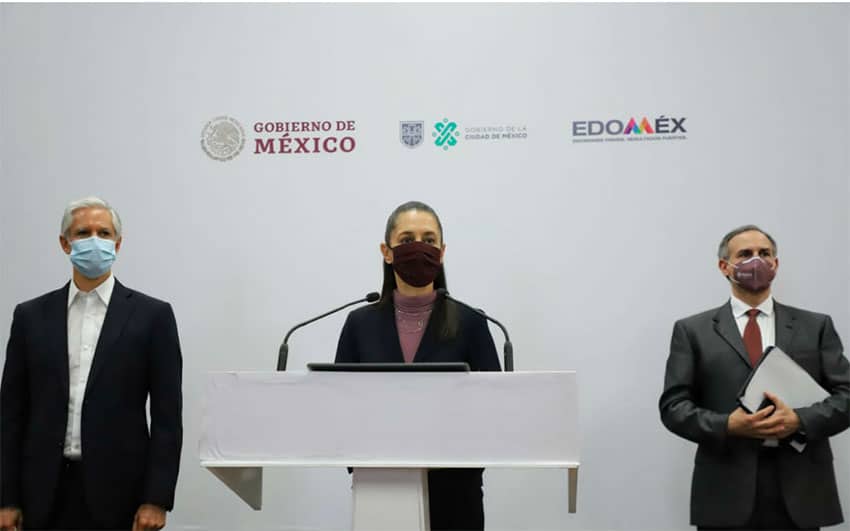
Mexico City has recorded almost 278,000 confirmed cases since the start of the pandemic – far more than any other state – while its official death toll is 19,583. The capital had remained at the orange light “high” risk level since late June.
In neighboring México state, which includes many municipalities that are part of the greater Mexico City metropolitan area, coronavirus infections are growing at an “alarming” rate, said Governor del Mazo.
He said the same restrictions that apply in Mexico City will also apply in México state due to their close proximity to each other.
The governor said hospital occupancy in his state has exceeded 75% and that new restrictions have to be implemented to reduce new case numbers.
“We know they’re difficult decisions with very significant implications but what we have to do today is put health first and save lives,” del Mazo said.
México state has recorded more than 130,000 confirmed coronavirus cases since the beginning of the pandemic and 13,071 Covid-19 deaths. Both totals are the second highest among the 32 states. There are currently 9,201 estimated active cases in México state.
Mexico City and México state will join Baja California and Zacatecas as red light states, although the federal government is scheduled to release an updated stoplight map Friday night, meaning that more states could turn red. There is also a possibility that the risk level in Baja California and Zacatecas will be reduced.
This month is on track to be the worst of the pandemic in Mexico in terms of new case numbers. More than 175,000 cases were reported in the first 17 days of December, and this month’s tally is likely to exceed that of July – the worst month to date – on the weekend.
Mexico’s accumulated case tally is currently just under 1.29 million while the official Covid-19 death toll is 116,487.
